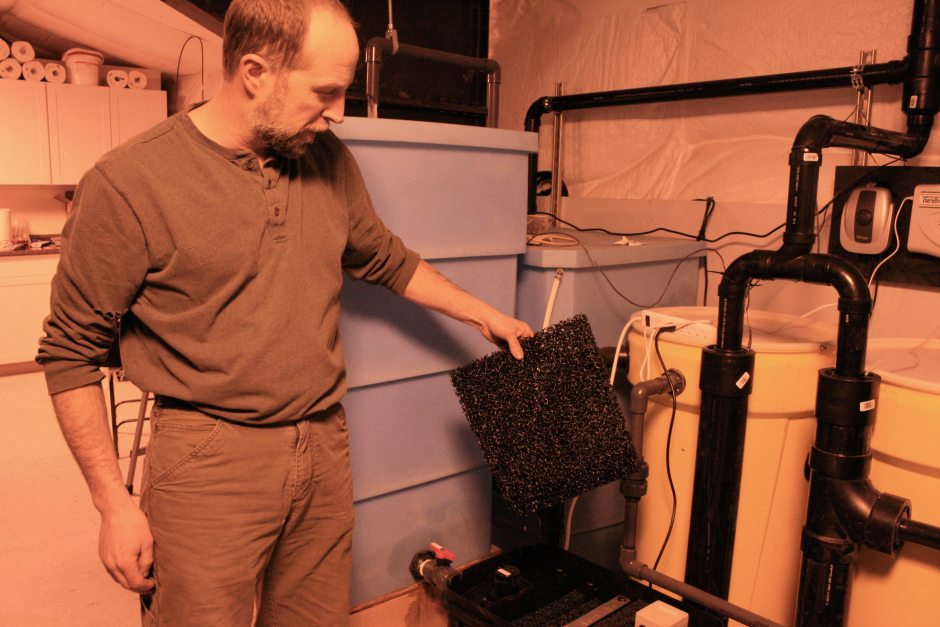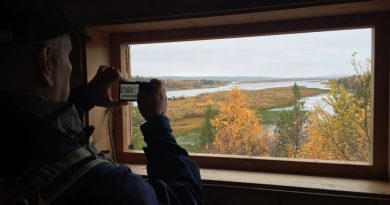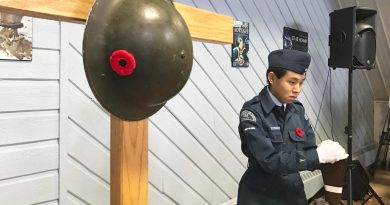New approach to sanitation in Alaska villages

(Lisa Demer/Alaska Dispatch News)
BETHEL – Three state-backed teams working to bring running water to 3,300 rural Alaska homes are developing their own versions of a revolutionary yet basic idea: Treat and reuse water within each home.
If the vision works, it could transform life for people in more than 30 villages, many of them in Southwest Alaska.
Nowhere in the United States – maybe nowhere in the world – is such an approach being used on the scale being investigated for Bush Alaska, said Bill Griffith, facility programs manager for the state Department of Environmental Conservation.
“This is very pioneering,” Griffith said Tuesday, just after the department announced three top-scoring teams that will move forward in the state Water and Sewer Challenge, out of six that had been participating.
Water treatment & recycling
The state also has its eye on separate experiments with in-home water treatment and recycling, including one already underway in a Bethel warehouse by Yukon-Kuskokwim Health Corp. and another in Kivalina by the Alaska Native Tribal Health Consortium. Some of the teams that didn’t make the cut in the state-backed program may also continue to work on models for villages that now lack flush toilets and running water, Griffith said.
Griffith said they could work together by combining different aspects of their systems.
The state challenge began in 2013 with the recruitment of project teams. It is being funded with $4 million in state and federal money over multiple years to develop and test in-home systems. The three teams still in the challenge are moving to pilot testing. Each is working with two villages to ensure the result makes sense for real life.
The cost of constructing a villagewide water and sewer system from scratch in rural Alaska works out to several hundred thousand dollars per home served, Griffith said. State and federal budgets are now too strained to cover that. The in-home systems, while not cheap, will be capped at $160,000 a home (counting retrofitting and fixtures other than a homeowner-supplied washing machine) and could be much cheaper, Griffith said. Projects that can be built – and run – at lower costs will be preferred, according to DEC.
One of the teams still in the challenge estimates its design could be built for $75,000 a home.
Households would have to cover a monthly bill for drinking water and system maintenance that could be in the range of $135, according to early estimates.
Projects in other parts of the country, including Florida and Ohio, are looking at such systems for water conservation or to reduce the amount of wastewater, Griffith said.
And in Australia, homeowners already can install systems to treat and reuse gray water for laundry, car washing, lawns and gardens – but it’s only reused once and isn’t used in showers, said Brian Lefferts, a YKHC official.
Treating gray water
Alaska systems are being designed to repeatedly reprocess water from showers and baths, bathroom sinks and washing machines. The gray water would be treated, then – if the designs work and community residents accept it – used for bathing, toilet flushing and clothes washing. A separate source of water treated for drinking would supply sinks. Black water – from toilets and the kitchen sink – still would need to be hauled to a sewage lagoon, or treated and otherwise disposed.
Each system would need to ensure at least 15 gallons of water per person per day – enough for a shower, occasional laundry, a flush toilet, cooking and drinking.
In rural Alaska now, people without running water often haul their own from community water plants or collect it from ponds, rivers or tundra ice. One water-filled basin might be used all day by entire families for washing hands. Laundry water is reused. Residents dump honey buckets in unsanitary lagoons.
Rough conditions lead to high rates of skin and respiratory disease.
While water quality is important, so is water quantity, and without an ample, affordable supply in homes, health suffers, said Tom Hennessy, a doctor, epidemiologist and director of the U.S. Centers for Disease Control’s Anchorage-based Arctic Investigations Program.
Project overview
The three projects still in the state challenge are:
* Dowl Alaska, with a team that includes engineers as well as an anthropologist, proposes housing water and wastewater holding tanks in a small, well-insulated vestibule attached to the house. It intends to set up its pilot treatment system in Fairbanks at the Cold Climate House Research Center.
* Summit Consulting Services Inc., with a team that includes consulting firm Agnew::Beck, is proposing treating raw water with a two-stage cartridge filtration process, then UV disinfection, in a system that would be configured inside homes. It is setting up its pilot project at its main office in Tok.
* The University of Alaska Anchorage, with a team that includes engineering companies, a number of other universities and the Alaska Native Tribal Health Consortium, is proposing to house its system in a small structure outside the home. Its system would not only recycle gray water, but could also treat some of the black water on site.
Meanwhile, in a Bethel warehouse, YKHC already has set up four different systems for testing. Its team will use prescribed amounts of typical household products – deodorant, toothpaste, shampoo, detergent — in its research.
If the pilot projects now getting underway are successful, systems then will be tested in homes. The state doesn’t expect widespread use until at least 2020. The designs must work, people must agree to reuse water and regulators must approve – which are three big challenges.
“It just never has been done,” Griffith said.
Contact Lisa Demer at LDemer@adn.com or on Twitter
Related stories from around the North:
Finland: Huge differences in Finland’s tapwater prices: study, Yle News
Greenland: Greenland – barrels of oil and bottles of water, Blog by Mia Bennett
United States: Run on bottled water in Emmonak, Alaska, after supply interruption, Alaska Dispatch News


